Is this still extreme weather or already a climate crisis?
Translated by Rose Shaw25,289 lightning strikes over Rhein-Main in one hour: On August 16th, there was a massive thunderstorm with heavy rainfall in Frankfurt, which even brought the airport to a standstill. Recently, wildfires have ravaged the forests in Greece, and there have been storm surges in Asia. Summer 2023 is certainly extreme. Some say, “Bad weather has always existed,” while others say, “These are the harbingers of our downfall.” I can’t help but wonder, is extreme weather related to the climate crisis?
What is extreme weather?

Extreme weather is a term used to describe meteorological events that are particularly intense or prolonged. There are various types of extreme weather events, such as heavy rainfall, droughts, heatwaves, cold snaps, storms, floods, snowstorms, tornadoes, hurricanes, and other unusual weather phenomena. Extreme weather events have significant impacts on our societies, the environment, agriculture, infrastructure, and the economy. They can cause extensive damage to buildings, lead to crop failures, result in floods, landslides, power outages, and other negative consequences. Human-induced climate change is causing an increase in extreme weather events. Since the 1990s, extreme weather events have already doubled worldwide (German).
Is extreme weather related to the climate crisis?
Climate crisis and heatwaves
When it comes to heatwaves, it’s easy to demonstrate the effect of climate change. The German Weather Service reports that temperatures in Germany have already increased on average by 1.7 degrees Celsius since 1881 (German). Where 35 degrees used to be normal, it’s now common to see temperatures of 36 or 37 degrees. In the future, we will have fewer cold days but many more extremely hot days. The weather is shifting towards extreme heat.
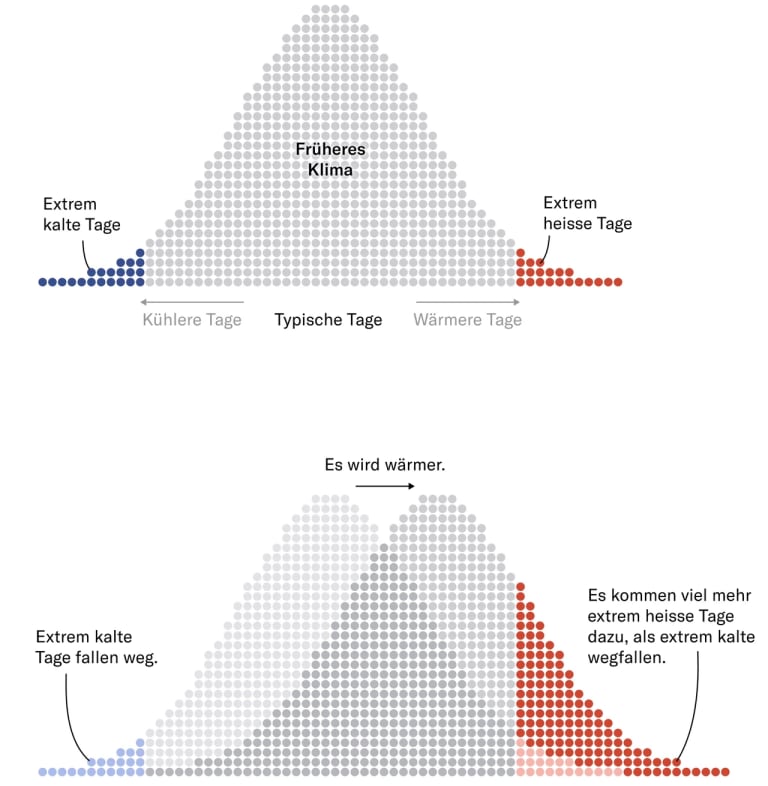
Climate Crisis and Heavy Rainfall

Climate change also leads to more intense rain showers. As the air becomes warmer, it can hold more water. For every degree of temperature increase, the air can hold 7% more water droplets (German)- more water that can then pour down heavily elsewhere.
Climate crisis and thunderstorms
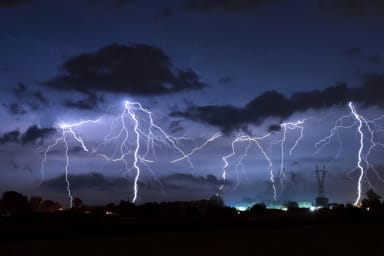
And what about thunderstorms? Scientists have already demonstrated that the frequency of lightning, for example in the Alps, has almost doubled in the last 40 years (German). Higher temperatures and more water in the atmosphere lead to more thunderstorms.
Extreme Weather Events Statistics
In the 21st century, the frequency of extreme weather events in Europe has significantly increased due to climate change. While only double-digit numbers of extreme weather events were recorded in the early 20th century, there were already 1,452 extreme weather events in 2019. Especially the number of floods and inundations is steadily rising. However, since the early 2000s, climate change has also greatly increased the likelihood of extreme temperatures and drought waves.

Extreme Weather Events in Germany: What Are the Consequences?
According to the Helmholtz Institute (German), the frequency of droughts has significantly increased across Germany over the last 50 years. Since 2017, there hasn’t been a year without droughts occurring. A study by the United Nations Food and Agriculture Organization from 2015 indicates that food losses during extreme droughts can reach up to 84 percent.
Extreme weather events in Germany incur costs. Floods result in massive financial damage. In the year 2016 alone, the financial damage caused by heavy rainfall in Germany amounted to 800,000,000 euros. Compared to 2008, this is nearly 15 times the financial damage.
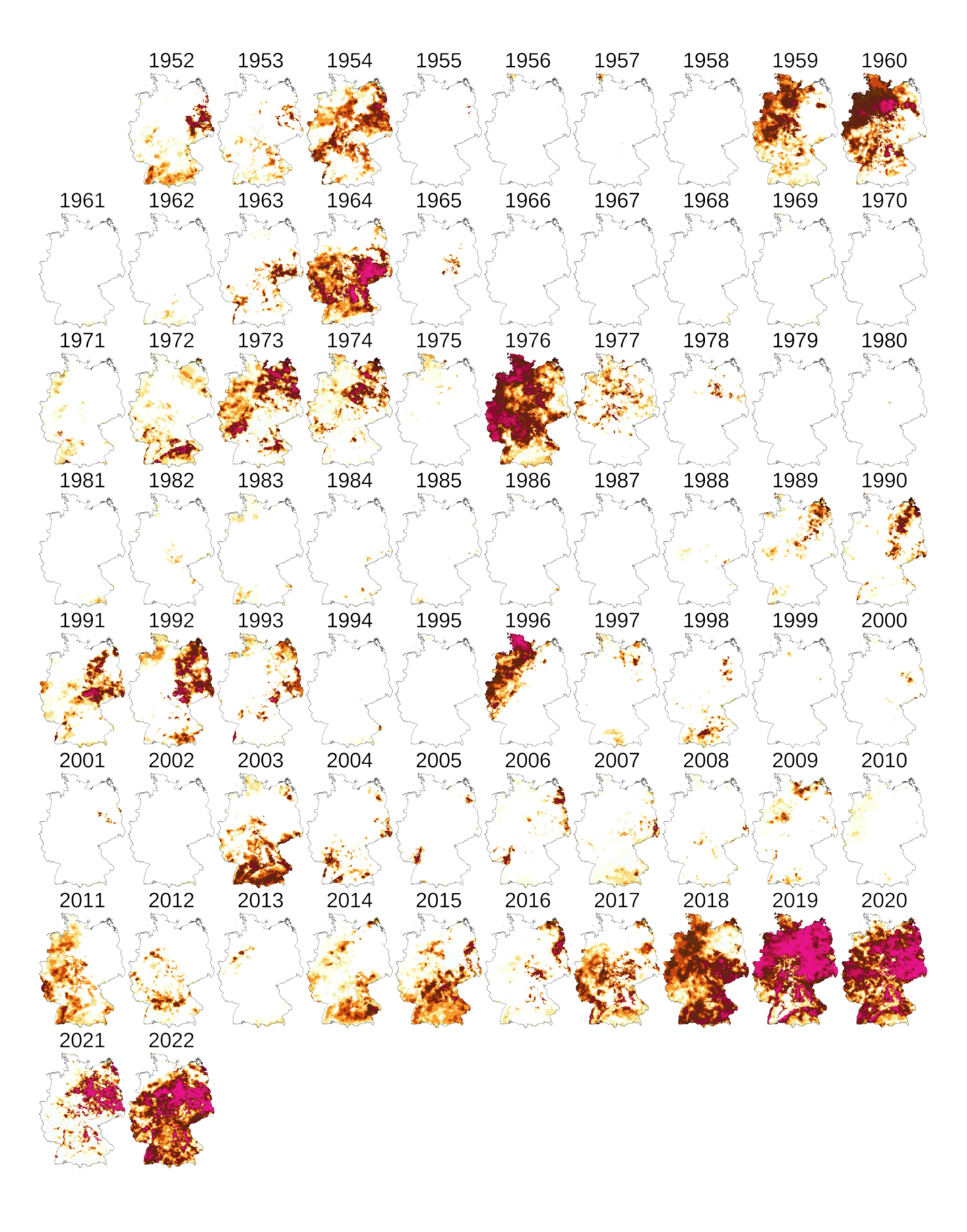
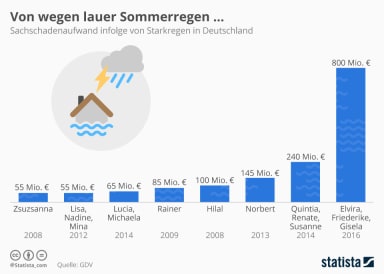
Which country is most affected by extreme weather?
Naturally, the risk of extreme weather events is increasing internationally as well. However, statistics on extreme weather events for countries in the global South often show even more severe impacts. Countries like Puerto Rico, Myanmar, or Haiti (German) are among the most affected by extreme weather events. Germany, however, is also considered a vulnerable region. The basis for assessing a country’s vulnerability is the climate risk ranking. The lower a country’s value on the ranking, the more vulnerable it is to the consequences of the climate crisis.
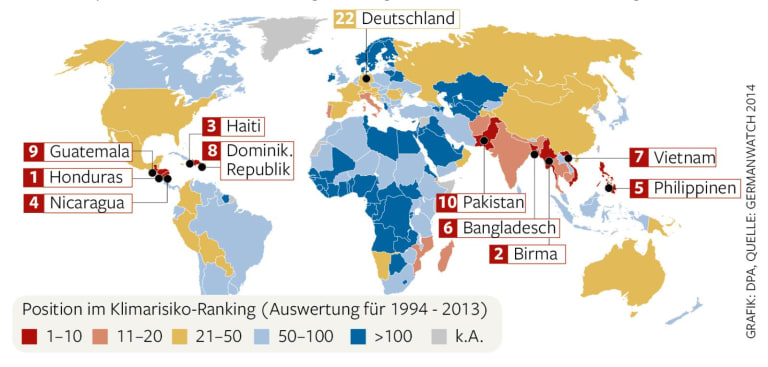
How can we mitigate climate change and extreme weather events?
Climate change is leading to extreme weather events. You can join us at ForTomorrow to help combat climate change. We purchase emissions rights and cancel them. This forces the industry in Europe to reduce their CO2 emissions. Additionally, we plant climate-resistant mixed forests in Germany to capture CO2. This is how we protect the climate in Europe.